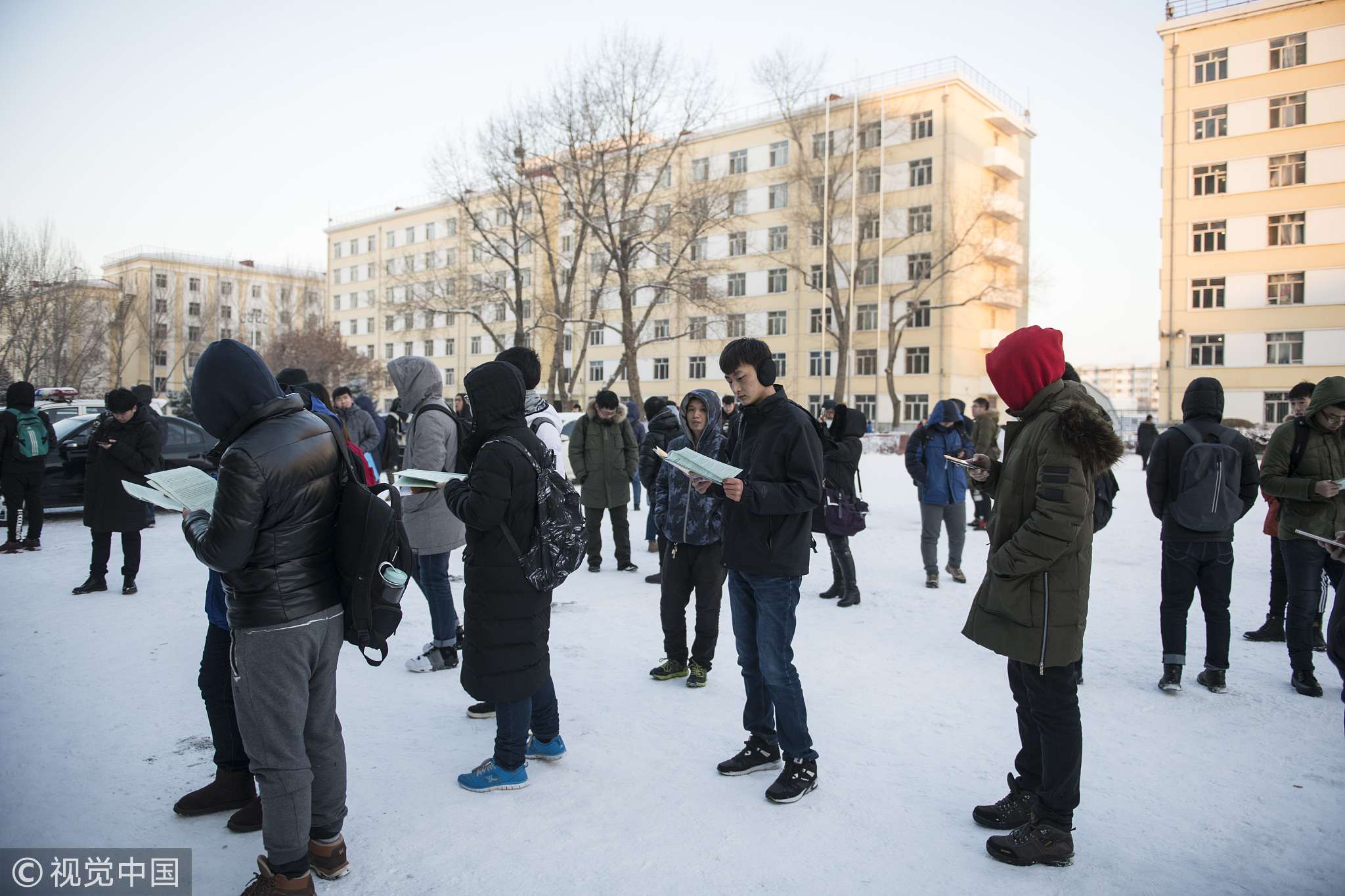
Opinions
12:55, 09-Jan-2019
Opinion: Where to now? 40 years after China resumed its postgraduate system
Updated
12:10, 12-Jan-2019
Wang Chuanyi and Duo Lan

Editor's note: Wang Chuanyi is an associate professor at Institute of Education, Tsinghua University, and Duo Lan is a research assistant at Institute of Education, Tsinghua University. The article reflects the authors' opinion, and not necessarily the views of CGTN.
Postgraduate education is the core element of China's implementation of innovation-driven development strategy and constructing an innovative country. It is an important combining site for primary productivity of science and technology, talent resources oriented, and primary motivation of innovation.
Achievements gained
Since the establishment of the academic degrees system in China in 1981, China's postgraduate education has made great achievements.
In terms of scale, the number of graduate students in China exceeded 2.6 million in 2017, making China a veritable large country in its graduate education development.
When it comes to structure, a clear training system has been formed at the institutional level with master's and doctoral levels, the dual structure of academic degree and professional degree, and the regional structure in provincial level.
As for quality, the Chinese postgraduate education system can cultivate a large number of scholars who are ranking the forefront of global science and technology, solving certain cutting-edge technological problems, and proposing major original theories.
In the hot papers selected by Clarivate Analytics in 2014, the contribution rate of graduate students is over 30 percent. And more than four-fifths of the winners of the National Prize for Natural Sciences received doctoral degrees in China in that year.
In general, China's postgraduate education has basically achieved the strategic goal of cultivating high-level talents independently at home.

Candidates are taking a postgraduate entrance exam in Harbin, northeast China's Heilongjiang Province, December 22, 2018. /VCG Photo
Candidates are taking a postgraduate entrance exam in Harbin, northeast China's Heilongjiang Province, December 22, 2018. /VCG Photo
Issues remained
However, what needs to be seen is that there are still some issues in China's postgraduate education that need to be deeply considered.
First, can the dual-type degrees in China's postgraduate education system effectively meet the needs of social economic development? Are graduate students who hold academic degrees able to expand the boundaries of human knowledge through education? Can graduate students with professional degrees meet the diversified needs of employers at all levels through education, or effectively transfer their professional knowledge into working scenario?
In addition, whether the operational mechanism of China's postgraduate education system can comprehensively take advantage of plans (the visible hand) and the market (the invisible hand), forming its own managing characteristics? The operation mechanism of China's postgraduate education system is mainly based on government plans. How many graduate students are enrolled in the school each year and how many programs can be provided for graduate students is mainly determined by the government.
However, some performance-based, quality-based, and market-based adjustment mechanisms have also been introduced in several universities. For instance, other than governmental plan, the important factor that determines whether a professor enrolls graduate students also includes the academic performance of the professor.

A postgraduate entrance exam in Harbin, December 22, 2018. /VCG Photo
A postgraduate entrance exam in Harbin, December 22, 2018. /VCG Photo
Moreover, there is still room for improvement in the quality of postgraduate education in China. In the annual random check of master's and doctoral theses organized by the Academic Degrees and Graduate Education Development Center of Ministry of Education, there are still a small number of theses are not qualified. According to the analysis of Wang Chuanyi and other scholars in 2015, nearly 80 percent of doctoral dissertations have not been cited by papers published in core journals.
Suggestion for improvement
For solving these issues, there are a few suggestions for deepening the reform of postgraduate education in China. First, classification reform is suggested to be conducted in selection methods and training modes according to the requirements of postgraduate education at different levels.
Besides, improvement in the scientific nature of graduate student admission with an emphasis on both professional capability and "soft skills" is needed, focusing on both past achievements and future potentials. And we should break through institutional barriers, take advantage of focused scientific research resources, deepen the integration between the industrial resources and postgraduate education, collaborate between research and teaching, and cultivate innovative talents through combining production and study.
What's more, other points include encouraging creativity, emphasizing cross-disciplinary education, and implementing the concept of multiple supervisors and rotational training in the laboratory; vigorously improve funding, guarantee a worry-free life of graduate students for them to focus on scientific research; bring in new concepts of evaluation, ensure graduate students are not only paying attention to papers and the impact factor but instead to the actual contribution of social and economic development.
(If you want to contribute and have a specific expertise, please contact us at opinions@cgtn.com.)

SITEMAP
Copyright © 2018 CGTN. Beijing ICP prepared NO.16065310-3
Copyright © 2018 CGTN. Beijing ICP prepared NO.16065310-3